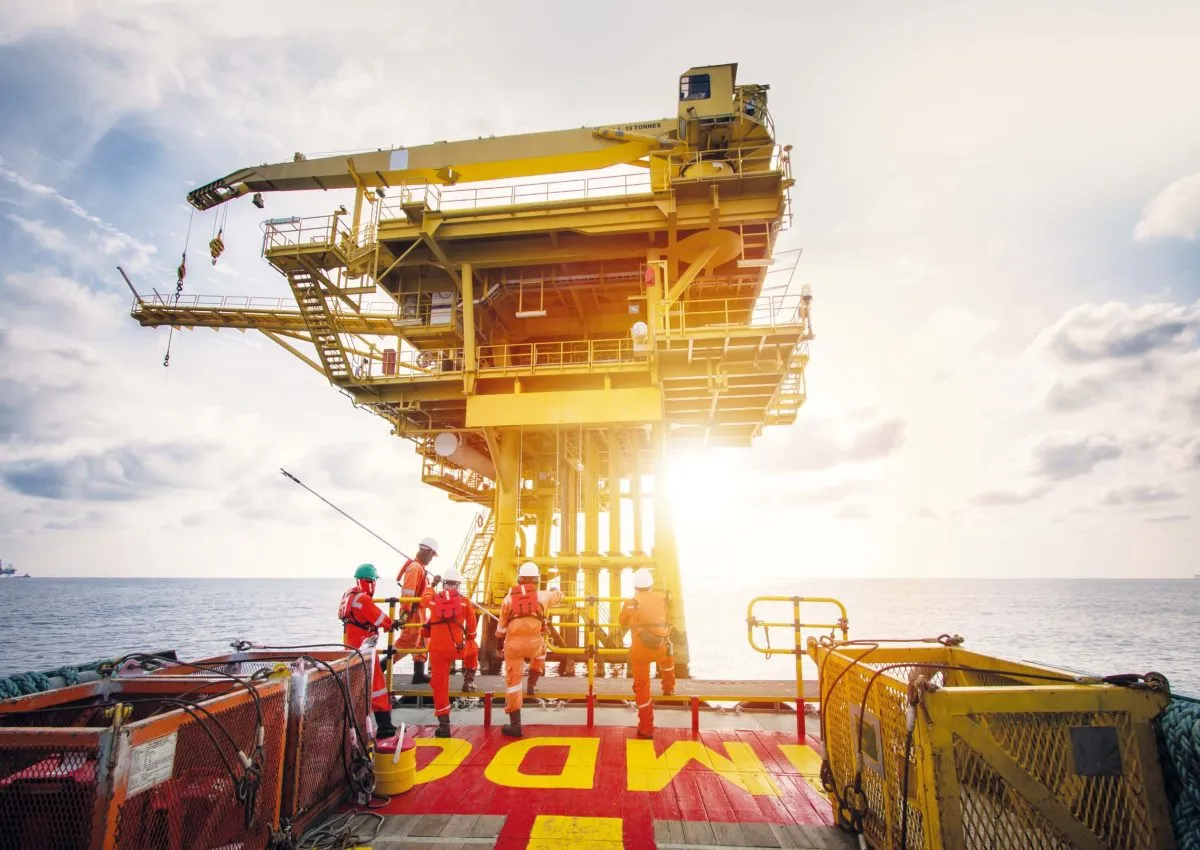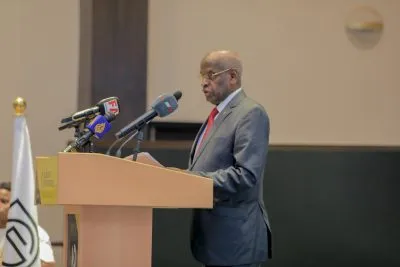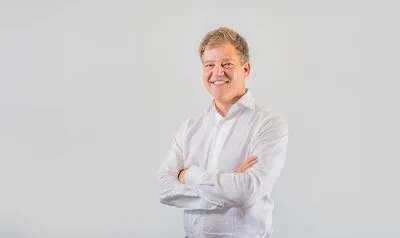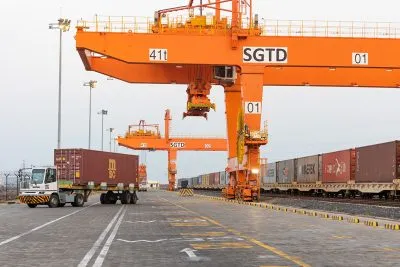The wait is nearly over. Phase 1 of the gigantic Grand-Tortue Ahmeyim (GTA) oil and gas project and its neighbouring field, Sangomar, run respectively by the British oil major BP and the Australian company Woodside, should come onstream by the end of the year. The government’s ambition is, through the Société des pétroles du Sénégal (Petrosen), to turn the country into a future hydrocarbon giant, with export revenues approaching 900bn CFA francs ($1.5bn) over the period 2023-2025, according to national forecasts.
A little over forty years after its creation, Petrosen is now in the big league. Created in 1981, the company was initially responsible for promoting the Senegalese sedimentary basin. In 1998, the company started to cover the upstream oil value chain and sign international agreements.
This resulted in the discovery of considerable oil and gas reserves of world-class assets between 2014 and 2016 in the south of the country, and in offshore reserves in the north that are divided between Mauritania and Senegal. In the aftermath of these discoveries, in November 2019, to adequately respond to this new oil and gas windfall, the government extensively revamped the national company, creating two subsidiaries overseen by Adama Diallo, Petrosen’s general manager.
At a national level guidelines have been put in place for how oil and gas proceeds will be used, bolstered by a law passed by parliament which is intended to avoid the country’s wealth being squandered.
New operating structure
In the new operating structure, one subsidiary looks after exploration and production (E&P). It is overseen by Thierny Seydou Ly, who worked for Total for several years in Paris, Nigeria, Gabon and Angola.
The second subsidiary, Petrosen Trading & Services (T&S), specialises in the supply of petroleum products to the market, as well as in distribution activities. It is headed by Manar Sall, a former Exxon and OiLibya executive with 30 years of experience in the industry.
“The simplest way to ensure that natural resources benefit the people as much as possible is for the distribution to be managed by a national company which, unlike a private company, is not necessarily intended to maximise profit,” says Sall.
In 2022, Petrosen took a majority stake in Société Africaine de Raffinage, and now holds 93.5% of the refinery. Refining capacity recently increased from 1.2m to 1.5m tonnes per year and the plan is to start processing crude oil from the Sangomar field. It is estimated that the country needs to refine 3m tonnes per year to meet domestic demand.
Petrosen also owns 51% of the Senegalese Gas Network (RGS). As for the oil and gas fields, Petrosen owns 20% of the Senegalese part of GTA and 18% of Sangomar.
The national company will also hold some of the offshore Yakaar-Teranga gas fields, where the final investment decision is expected to be made by early 2024.
The bulk of its production is expected to be for local consumption, including electricity generation – the government hopes to achieve universal access to electricity by 2025; it stands at 65% today.
“We will cover the whole value chain, from upstream to downstream. It is not unreasonable to say that we have an ambition to be globally competitive and become an important player in the oil and gas sector,” says Petrosen’s Sall.
Numerous projects in the upstream
Since its creation at the end of 2019, Petrosen T&S, according to Sall, is slowly but surely moving forward in the field of petroleum product distribution. The 58-year-old general manager aims to cover the territory with 120 to 130 Petrosen-branded stations within four or five years “so that the Senegalese do not have to travel more than 20 km to find gasoline”.
Eleven stations, six on land and five at sea, have already been launched. Sall’s long-term objective is to overtake the sector leader TotalEnergies – which has a network of more than 170 service stations – as well as Vivo Energy, OLA Energy and Oryx Energies. Since last year, Petrosen’s downstream subsidiary has launched a mobile application that allows users to buy or transfer fuel using a QR code in more than 200 partner service stations.
Petrosen T&S is also expected to start distributing butane gas within the next few months to democratise its access while fighting deforestation, which is partly linked to wood-fired cooking. “Today, people cannot access butane gas cylinders in remote areas; the price becomes a constraint because of the transport costs. Therefore, we will invest in gas filling centres so that the prices are the same in Dakar and other major cities,” explains Sall.
Another large-scale project is the creation in February of the subsidiary Senegal Fertilizer Company (Sefco), which is responsible for building a urea fertiliser production unit with a capacity of 1.2m tonnes per year. This industrial site will be based at the port of Ndayane, south of Dakar. The investment, estimated at $1.45bn, will make it one of the most expensive projects in the country’s history, behind the Sangomar and GTA oil and gas fields – which cost around $5bn. The plant, expected to come on stream by the end of 2027, is designed to reduce fertiliser imports, lower the trade deficit and improve agricultural productivity.
Petrosen T&S turnover has risen from 56.8bn CFA francs in 2021 to 525bn CFA francs in 2022 ($860m) – and 90% of it is from trading. “We ensure and secure the country’s supply of petroleum products, in addition to the Société Africaine de Raffinage (SAR) production,” explains Petrosen’s Sall. In 2022, SAR was undergoing maintenance, which slightly inflated the turnover of Petrosen T&S, which should stabilise “at 300-350bn CFA francs in 2023.”
For its part, Petrosen E&P continues its exploration activities. “We also continue our promotional activities to sign contracts with new oil companies. We have thirty blocks with high potential and available data, and only eight are under contract,” explains Thierno Seydou Ly. The state could own up to 30% of these deposits, according to the hydrocarbon code passed in 2019.
The 40-year-old is looking ahead to the next five to ten years. “At the national level, we want to reinvest oil and gas resources in the education and health sectors, in infrastructure, but also to ensure cheaper, abundant and environmentally-friendly electricity production, using gas, which is less damaging than oil.
“In short, we intend to make the oil and gas sector a driver of the country’s industrialisation to achieve emergence.”
What about continental ambitions? “Our goal is for Petrosen to become a leader in Africa and even beyond,” says Thierno Seydou Ly. “I am confident that the future will be rosy”.
Read more about Senegal’s booming economy in our Senegal Dossier.
Want to continue reading? Subscribe today.
You've read all your free articles for this month! Subscribe now to enjoy full access to our content.
Digital Monthly
£8.00 / month
Receive full unlimited access to our articles, opinions, podcasts and more.
Digital Yearly
£70.00 / year
Our best value offer - save £26 and gain access to all of our digital content for an entire year!

 Sign in with Google
Sign in with Google 



